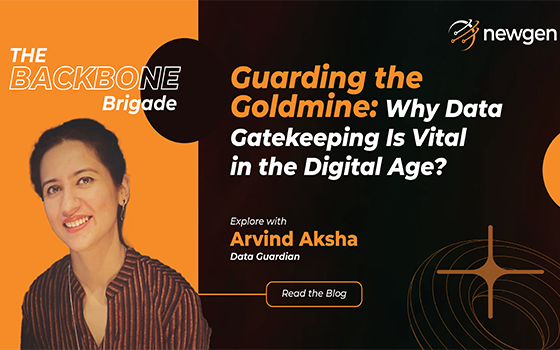Have you ever tripped on the stairs and instinctively grabbed the handrail? I have. That one small bar saved me from a pretty embarrassing tumble. It’s so easy to overlook until you actually need it. That handrail is a perfect metaphor for data gatekeeping within organizations—always there, quietly doing its job, until the moment it becomes absolutely critical.
In our digital world, data is the backbone of everything. Strategies, innovations, customer experiences—all depend on it. But just like a staircase without a handrail, an organization without data safeguards is a disaster waiting to happen.
Gatekeeping: A Role Often Misunderstood
I remember the first time I had to deny someone access to data. A bright-eyed recruit, eager to dive in, asked for unrestricted access. Saying no felt awkward—almost like I was crushing their enthusiasm. But gatekeeping isn’t about shutting doors; it’s about making sure the right doors are opened for the right people.
Over time, I’ve come to see gatekeeping as a responsibility, not a restriction. It ensures that data is used responsibly, ethically, and securely—a role that transforms resistance into respect.
What Is Data Gatekeeping?
Think of the time you lent a friend your car. You didn’t hand over the keys without asking if they knew how to drive or checking if they had a license, right? Data gatekeeping works the same way. It’s about ensuring that the people accessing sensitive information are equipped to handle it responsibly.
Core Responsibilities of a Data Gatekeeper:
- Granting access only to authorized personnel.
- Regularly verifying and validating incoming data.
- Keeping an ethical eye on how data is collected, stored, and used.
- Implementing security protocols to prevent breaches.
- Maintaining detailed audit trails to track usage.
Gatekeeping is about building a culture of accountability. It’s not about saying no—it’s about saying yes, with safeguards in place.
Why Data Integrity Matters for Customer-Centric Organizations
I once had a client presentation go sideways because of a single outdated metric in a dashboard. The client noticed, and let’s just say, their trust took a hit. That’s when I truly understood that data integrity isn’t optional. It’s essential.
Accurate data isn’t just nice to have; it’s the foundation of informed decisions, operational efficiency, and customer trust. Every time you double-check a report or validate a dataset, you’re reinforcing that foundation.
Key Benefits of Data Integrity:
- Informed Decisions: Reliable data leads to smarter strategies.
- Efficiency: Clean data eliminates redundancies and errors.
- Compliance: It keeps you aligned with regulations.
- Trust: Customers stick with brands that respect their data.
Transparency: The Adhesive Binding Data Practices
A colleague once told me, “Transparency is like telling people why the roller coaster has seat belts.” If you’re open about why you do what you do, people are more likely to trust you. That’s exactly what transparency does for data gatekeeping.
Ways to Foster Transparency:
- Clearly explain why and how data is being collected and secured.
- Use data only for its intended purpose. No shortcuts.
- Conduct regular audits to ensure compliance with policies.
- Inform stakeholders promptly if something goes wrong and share your action plan.
Transparency transforms skepticism into trust. It shows people you’re not just handling their data—you’re safeguarding their interests.
Overcoming Challenges in Gatekeeping
I’ll admit, there have been moments when gatekeeping felt overwhelming. Like the time we discovered fragmented data spread across departments. It was a nightmare to reconcile, but it taught me the importance of proactive practices.
Common Challenges:
- Data Volume: Managing massive datasets is tough.
- Fragmentation: Siloed data creates inconsistencies.
- Cyber Threats: Constant vigilance is non-negotiable.
- Resource Constraints: Small teams struggle to maintain robust practices.
Practical Solutions:
- Leverage AI-driven tools to automate data validation and monitor anomalies.
- Train employees to understand the “why” behind data integrity.
- Collaborate across teams to unify data practices and share best practices.
It’s not easy, but it’s worth it. Every step you take strengthens your organization’s resilience.
Building Trust as a Data Champion
A mentor once told me, “Trust isn’t given; it’s earned.” That’s especially true with data. Organizations that prioritize ethical, transparent, and secure data practices don’t just mitigate risks—they earn the loyalty of customers and partners.
By embedding data integrity into your organization’s culture, you’re not just protecting information—you’re building a legacy of trust. So, the next time someone asks why you’re so strict about gatekeeping, tell them this: “Because it’s not just about data. It’s about trust.”
About Author
Arvind is a data-driven marketing leader with deep expertise in survey design, data analysis, insights generation, and impactful communication. As a trusted gatekeeper of data Availability-Integrity-Confidentiality, she excels at leveraging complex datasets to uncover pain points and spotlight key champions driving customer success.
You might be interested in



25 Sep, 2025
Transforming Enterprises with Newgen’s Business Process Management Software

